Although it weighs less than a soup spoon, the cavity-nesting, insect-eating, and curious Carolina wren seems to be using urbanization to their advantage — simply by using objects that humans provide.
As urban areas grow, impacts on wildlife increase. Pesticide use can cause low prey abundance. Clearing trees to build more houses and business buildings results in the lack of nesting habitat. Particularly with birds, research suggests urbanization can play a huge role in survival. However, the Carolina wren in particular seems to have found a few ways to assist with their urban occupancy.
Unlike other birds who may find it harder to adapt to urban areas, it seems that Carolina wrens may be finding ways to benefit from our human presence.
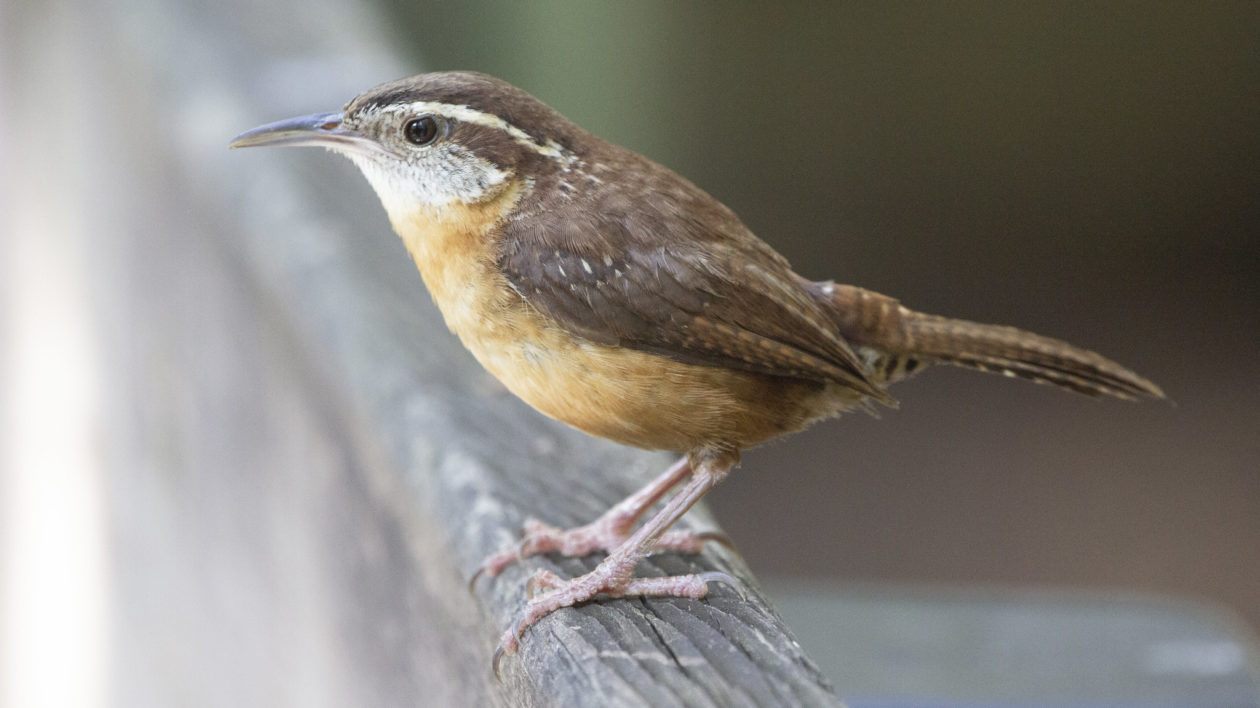
You may be hearing more of the very recognizable “tea-kettle tea-kettle” call and seeing more of the chestnut and cinnamon color of the Carolina wren throughout more urban and suburban areas. Although commonly found foraging and living in rural areas of open woods and backyards, the Carolina wren has also been bringing its activities to urban and suburban areas also.
The science and mystery behind a bird’s behavior and survival comes from observations and continuous monitoring. Jacob Malcom, director of the Center for Conservation Innovation at Defenders of Wildlife, expresses his passion about working with birds through various birding activities. He also expresses a notable soft spot for Carolina wrens.
“My start in conservation was through birds — including lots of Christmas Bird Counts, Breeding Bird Surveys, and even more bird banding (tracking birds) at migration stations and Monitoring Avian Production and Survivorship (MAPS) stations around the country, as well as other bird research spanning from northwestern Alaska to Venezuela,” he says. “However, wrens are one of my favorite groups…great behavior and personality, really tough to band if you’re not careful, and relatively abundant in most areas we go.”

For some birds living in urban areas, there are different challenges that they must overcome; one of those challenges is food. For the Carolina wren, the majority of their diet consists of spiders and insects such as grasshoppers, beetles, and crickets.
Malcom recalls an observation of foraging Carolina wrens while working from his home in Maryland which overlooks the Potomac River and Blue Ridge.
“Most of the time I’m on our patio where we let wildflowers grow up for pollinators and other critters,” he says. “Most mornings around daybreak, a pair of Carolina wrens will come through and work along the fence looking for new morsels for breakfast. Spiders are probably a common treat for them, but resting pollinators like native bees, flies, and moths are all quite abundant.”

Curiosity Helps the Wren
Unfortunately, the abundance of these insects are continuing to be impacted by urbanization practices, including pesticides.
Increased use of pesticides in urban areas decimate insect abundance. According to one recent analysis, more than 40% of insect species are declining and a third are endangered. If this decrease continues, this will impact many species groups, including birds like the Carolina wren that rely on this food source. Although it seems that a small number of adaptable species of insects are increasing in number, this increase is still not nearly enough to outweigh the big losses.
Not only are wren’s primary food sources continuously impacted, but sometimes their ideal nesting locations in urban areas may also be scarce. These lack of nesting locations might also pose a challenge.
With both of these potential challenges, it appears to help in their favor that Carolina wrens seem to be very curious; they seem to have found ways to utilize both supplemental food and nesting resources to assist with their survival in urban areas.
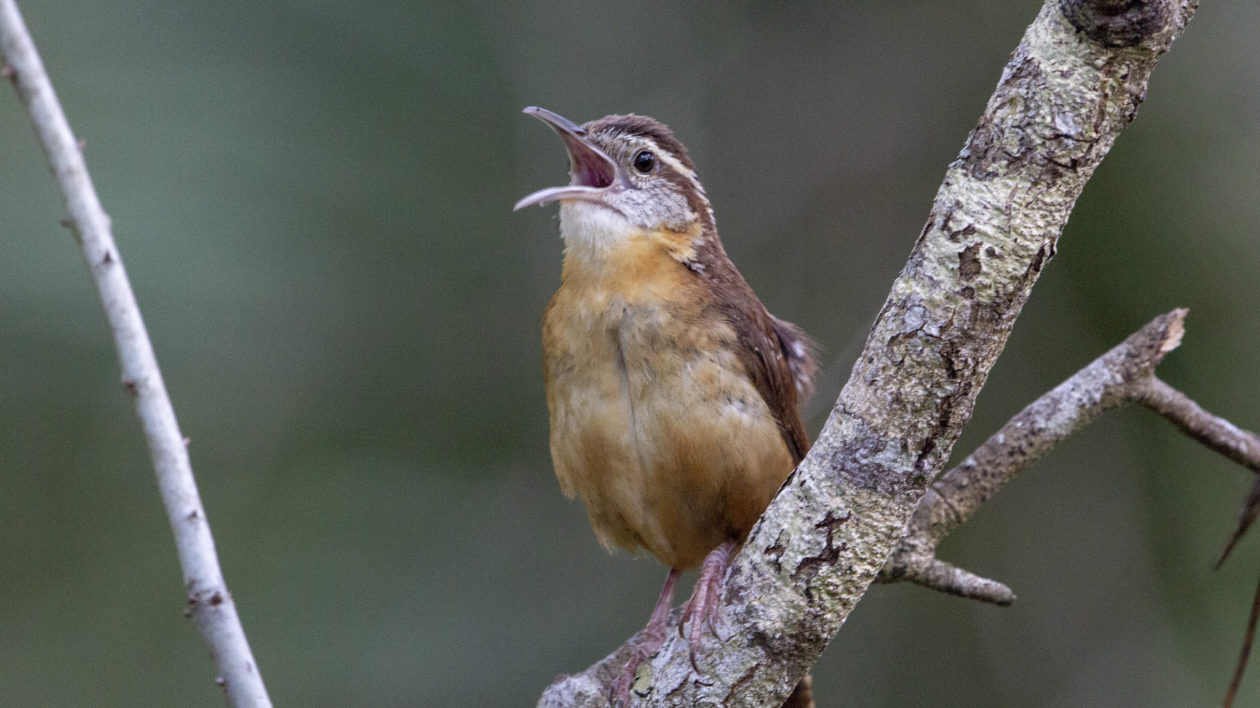
“Perhaps Carolina wrens’ habit of exploring human objects and structures for food predisposes them to be unafraid of unfamiliar objects,” says Dr. Jeremy Hyman, a biology professor at Western Carolina University.
Hyman, who completed his PhD work studying Carolina wrens, expresses his opinion about how urban areas may be impacting their food sources.
“As non-migratory birds, Carolina wrens have to deal with cold winter temperatures and snow. I imagine that as impervious surface increases, and vegetation cover and leaf litter decreases, the food supply, particularly in the winter, becomes too low to support a bird that forages primarily on the ground for arthropod prey.”
To combat low insect populations, some people will provide birds with food at feeders. One study found that Carolina wrens in urban areas benefit greatly from visiting feeders. By analyzing Carolina wren feeder responses in residential, city parks, and urban areas in a northern location, their findings proposed that wrens frequently visited feeders and that bird feeders in general were helpful, especially during the winter months when insect populations were lower.
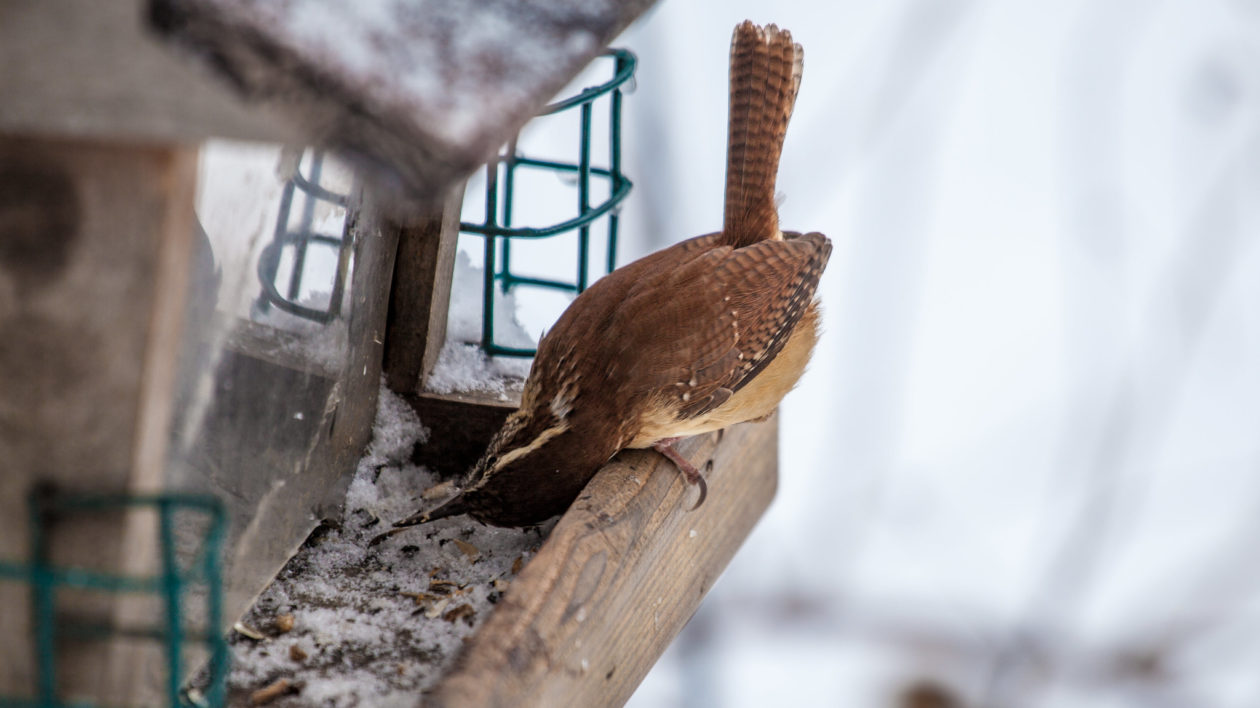
In urban areas, wrens have become versatile nesters and have gotten creative when it comes to their nesting locations. One recent study noted some to build their nests in garden pots. They have also been known to nest in other peculiar places such as mailboxes and even shoes left outside for long periods of time! wrens may particularly like starting nests in reusable shopping bags hanging from a rack or find nooks and crannies in shelf storage areas if the garage door gets left open. They might even seek shelter under cars or even in spare tires.
“I live in a very rural, highly forested neighborhood, and the last 2 years in a row, Carolina wrens have nested successfully in the spare tire on the back of my car,” recalls Hyman. “Luckily, I didn’t have to drive much this summer.”
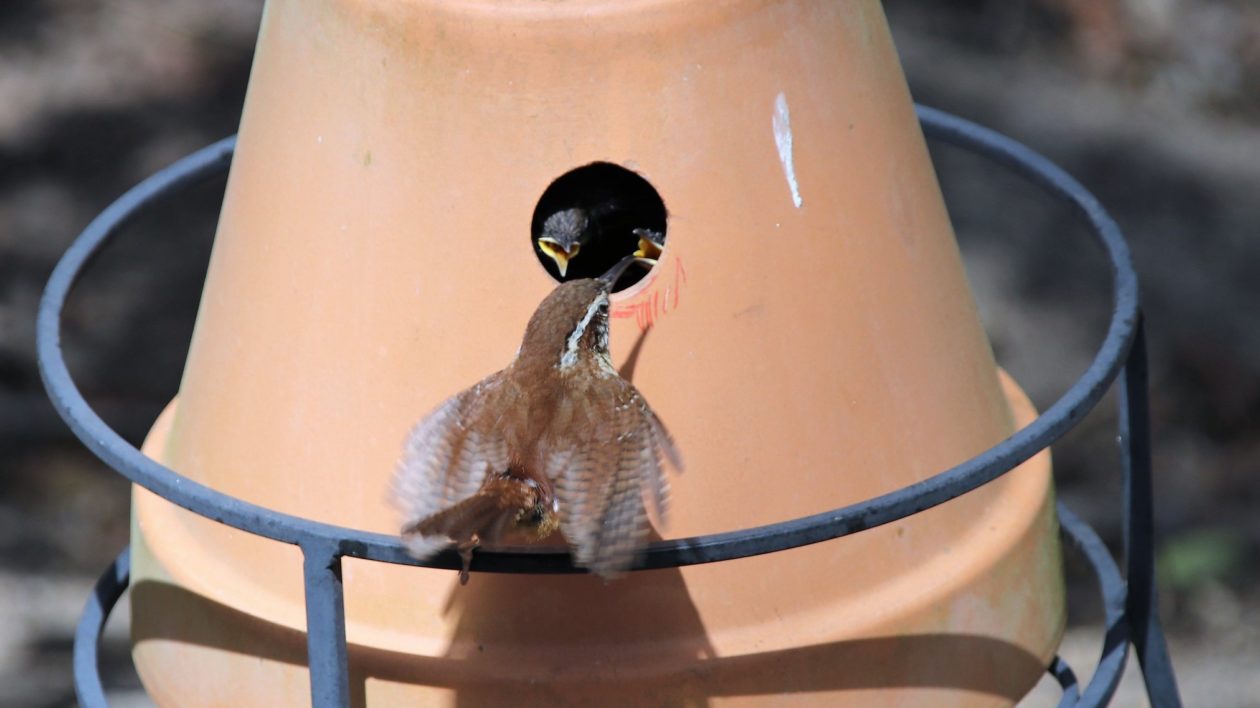
Welcome Wrens with Feeders and Nests
Although the Carolina wren seems to have things under control, humans can still continue to help them out. Continuing to provide alternate food sources (such as bird feeders) is one way. Providing more nesting locations such as nest boxes provides another choice when choosing a safe and secure nesting location (read more on Carolina wren nests in my next blog post).
Although the use of feeders and humanized nesting locations seem to be assisting Carolina wren’s living in urban areas, it does not mean these little birds are guaranteed a secure future. There is no single metric used to measure urbanization, and therefore, there are several problems associated with determining a species’ success. For instance, other aspects of avian survival caused by a growing urban population affecting Carolina wrens as well as other birds include migration, predation, and communication between species.
There is no doubt that these interactions exhibited in urban and suburban areas by the Carolina wren open up new research opportunities to explore other potential behaviors and interactions in other species of birds. What are other species possibly doing to adapt to urban areas, and more importantly, why do they choose to stay?
“Like the Carolina wren, other species may seem predisposed to do well in urban areas,” says Hyman. “More research might be required to understand if there are ecological correlations which explain why some birds may not show any indications to flee.”
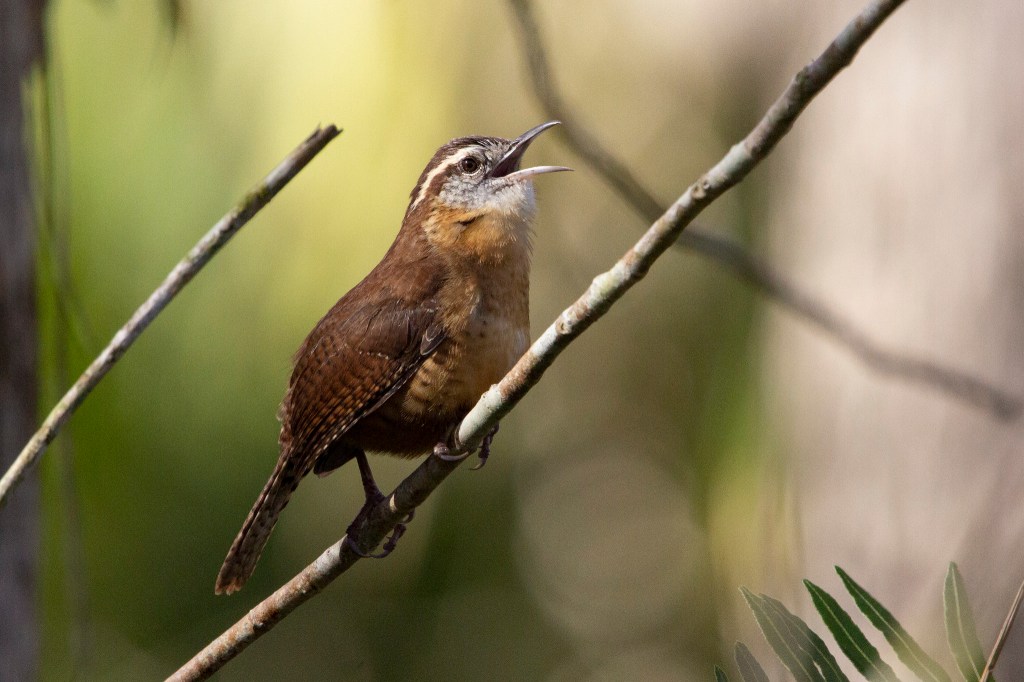



Oh, I love Carolina Wrens, such whimsical creatures of song! I have one right now that shows up on my screen porch, somehow gaining access every day or so, and I go out to open the door to let him fly. Their song is joyful and makes me as happy as watching them curiously inspect their surroundings. They go to the feeder from time to time, and I am glad because it is cold outside.
Thank you for your wonderful article!
I have a California wren at the moment nesting in a robin’s nest in my hanging planter. The robin left with her young and went to take the nest out and heard the squawking of the wren so I left the nest there. Started seeing the wren adding more to that nest so I left it alone so I am sure there will be some babies soon
We’ve recently had a mother Wren build a nest in our garage, up on shelf between two boxes and an old sweatshirt. Luckily it was also directly behind a garage cam I had installed a year before. Once, we knew she was going in and out regularly, I turned the small cam around facing it directly at the nest. We’ve been having fun watching her once we noticed 4 little eggs. I’ve even been leaving the garage door up at night so she can come and go. She doesn’t appear fazed at all with our coming and going to our cars, or even the noise of the doors. It’s been almost 10 days since we noticed the eggs, and she spends most of the day and night sitting on them. Hopefully, we’ll have a few little ones soon.
I have Carolina wren in my screened porch on table with basket full of small gardening tools.This is new experience for me.There were eggs and now they are little birdies and parents feeding them every 20-30 minute start 6:45am until 7:30 pm.
Unfortunately that attracts Water moccasin snake.Snake kept coming every evening waiting for the Wren babies start learning to fly.
Finally last night I successfully killed the Snake. Thank to my neighbors to say “you can smell the snake before you see it”.Smells awful like decay.Venomous and Could bite out dogs or us.We live near to retention pond in central Florida.It was very hard to killing it with shovel.
Thanks Great info. We recently had a pair of wrens move into our next door neighbor’s bird house which is right outside a porch window. Their cheerful song is so beautiful! We filled our feeders and I put up another house back and on the other side of the yard just in case they have friends looking to move in.. if there is something else we can do to invite wrens please let us know.
Recently had wrens nest in the cavity of my jeeps spare tire, parked in our garage. What a safe place dry and warm. I just couldn’t drive it for a couple of weeks
I have a pair of Carolina wrens that have built a nest in a tall pot right beside my front door. The side they have chosen is vacant of a plant but I have a young hydrangea already in the pot opposite the nest. Will I be able to water the plant lightly to keep both plant moist and nest undisturbed?
Just spotted one of these in my yard yesterday in Spring, north of Houston, TX. Put the bird feeders out last week and I guess the activity clued it in that this was a good place to come. Very bold! Not the least fussed by me peeking at it looking through my potted plants on the porch.
I live in Western MA and though I’ve seen wrens before, they’ve never stuck around past early spring. This year I had a pair stick around, nesting somewhere on my neighbor’s property, and I would hear them vocalizing and see them flitting around. I believe they hatched a brood elsewhere before setting up shop midsummer in the purely ornamental birdhouse on the front of my house. I enjoyed watching these dedicated parents and was fortunate enough to see the babies take first flight. I didn’t see any of them for a few weeks, but now they’re back at the feeders and they appear to be overnighting in a hanging begonia. Great little birds.
We have both Carolina and house wrens in our backyard. We don’t see them at our feeders, probably because we feed only black oil sunflowers seeds. What seed are favorites for wrens?
We had a wren pair nest above our back door. They had 2 babies in the nest. One hopped out way too early…3 times! I put him back in the nest each time but he wanted out. He could not fly yet, so we put him in a large enclosure with a makeshift nest that he loved. It was under the nest. Parents continued to feed him. On day 3, he flew high enough to get out of his enclosure. I saw a parent on the fence, watching her baby loose. She lured him to one of our trees. He could not fly high enough to be with her, so I placed him on the branch. I told him to be careful and left him with a lump in my throat. I will now put out a peanut/blueberry suet block for them.
We have a plant rack on out back deck which is against the wall of the house. We keep the watering can and some spice plants on it. We put a nine pack of coleus on the rack until we had time to plant them in the garden. Too late two Carolina wrens took this as a good place to build a nest which they did in three days. They are now raising five chicks in the nest. We are just going to let the wrens have the pack of coleus and see if they renest after these chicks are fully raised. We are in Mt. Pleasant, sc
I *think* it’s a Carolina Wren ‘couple’ who has moved into the birdhouse we intended for Eastern Bluebirds. If I submit a picture, can someone confirm or deny? It looks like they now have a brood of 3 or 4 young babies in there.
I found this article to be very interesting in that I have a covered cabana attached to my dock on a lake here in western North Carolina. Earlier this Spring, I had an old plastic bucket containing some rope, a can of insect repellant, and a few other items. While absent from my dock for approximately three days; I came back one day to find a Carolina wren nest already built and being attended by the mail and the female. The family has been here now for some time and the mom and dad are feeding their young while I sit not six feet from the bucket and watch. Am now curious as to how the young will get out of the bucket and fledge. I have take photos and posted to facebook.
Thank you for the article.
For two years now Carolina Wrens have nested in one of our kayaks on the storage rack. They are stored opening down so it makes for a totally weather proof nest location for them. Can’t use that kayak for a while but don’t mind as they are cool little characters to have around.